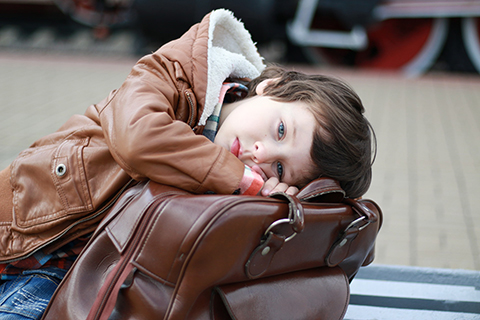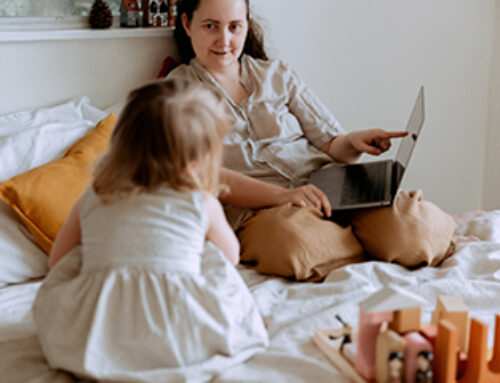Waiting is a part of life. As adults, we must wait in lines frequently at the store, at restaurants, in our cars, and even to go to the bathroom. It is important that kids learn how to wait, not only for their future of waiting in lines, but also to help them be calm now during the times they must wait on adults. Waiting is hard, though; not only for kids but for adults, as well. We use phones, work, music, books, podcasts, and magazines to help us wait in traffic and lines. Kids need adult support to utilize strategies to control impulsive behavior to stay calm when waiting.
The just-right challenge. Acknowledge that you as an adult have developed many strategies to help you wait for long periods of time. Your child has not. A few minutes seem like a long time to a young child and expectations of a young child waiting for more than 2-3 minutes without an activity may be too high. Providing children the appropriate amount of challenge helps them expand their skills and reinforces their confidence in their ability to complete challenging tasks. Providing too challenging of a task sets up kids for failure, allowing them to continue to relive failure, which can deplete their confidence and self-efficacy.


Start small. In a recent study done by Stephanie Carlson in Developmental Psychology, some of the typically developing kids between the ages of 3 and 5 were able to wait up to 10 minutes to receive double the number of marshmallows as a reward. While this may be a good goal for your child, it would be best to start in small and consistent increments before jumping to 10 minutes. It is important to point out that only some of these children were able to wait 10 minutes, so this may not be a good goal for your child. By starting small and increasing slowly, you can find out your child’s abilities.
Be clear. Make sure your child understands that they are waiting and provide an endpoint. It is difficult for younger kids to understand time. Using visual representations of time and/or consistent verbal reminders of time will help your child see an end to the wait. Just as adults see an end to the line, see the movement of the line forward, or can see time ticking down, kids need some way to see an end. You can do this by giving them consistent verbal countdowns (i.e. 2 more minutes, 1 more minute, countdown from 10), visual timers (i.e. apps that show a clock face with colors that slowly get smaller to reveal a picture behind the clock), or first/then language (For example, “First I need to put on my gloves, shoes, and hat, then we will go to the car”). Warning a child before a waiting period can also provide the child the opportunity to prepare for waiting. For example, “When we get to the store, first we will get apples and bananas, then we will wait in line to pay.” Similarly, some kids, like those in Stephanie Carlson’s study, would benefit from a reward after their wait. For example, “After we are done waiting, you can have a piece of candy.”
Distractions are not bad. During longer waits, kids need something to do, just like adults. Adults frequently use phones to distract themselves during long lines at the store or at the airport. Kids should be provided some of the same options. Some options include phones, books, special waiting toys only used during those times, putty, music, and/or other preferred toys.
It may take some time, but once your child understands and trusts that there is an end to waiting, then they will be better equipped to wait for longer periods of time. If you are unsure about implementing these strategies or you are having trouble, please reach out to your therapy team to help create a system that works best for you and your child.
Carlsonet al.Cohort effects in children’s delay of gratification. Developmental Psychology. Published online June 25, 2018. doi:10.1037/dev0000533.

Blue Bird Day fosters socialization, sensory regulation, and pre-academic learning in children ages 2-7 years in therapeutic rotations that simulate preschool and kindergarten settings. Our compassionate therapists practice a relationship-based and family-centered approach, provide parent training, and collaborate on goals and individualized intensive treatment plans for your child.
We believe in a collaborative and multi-disciplinary team approach to therapy. A team of occupational therapists, speech-language pathologists, dietitians, developmental therapists, behavioral therapists, physical therapists, and therapeutic assistants are created for each child to ensure child and family are fully supported and the best possible results are achieved.
Options for individualized, group and virtual therapy sessions are available as well.
Want to learn more or you have a specific question? Feel free to connect with us here!



